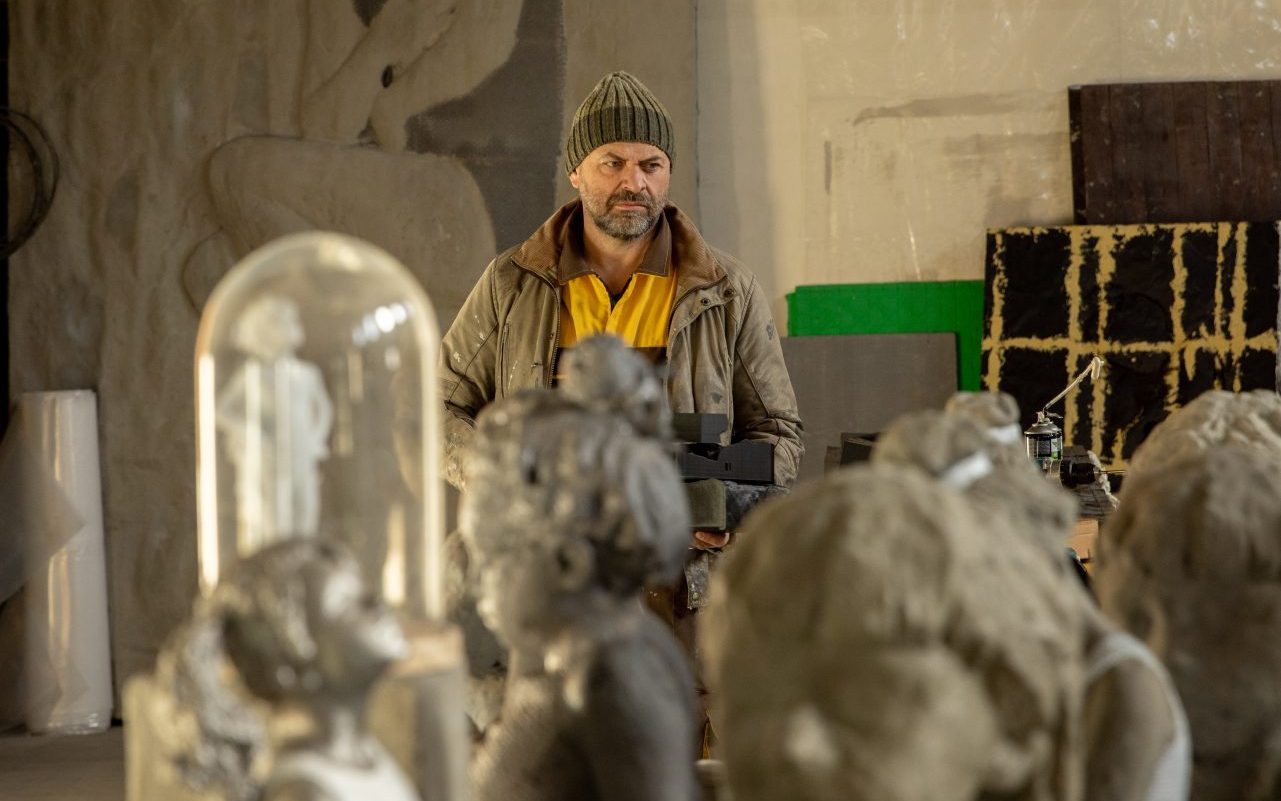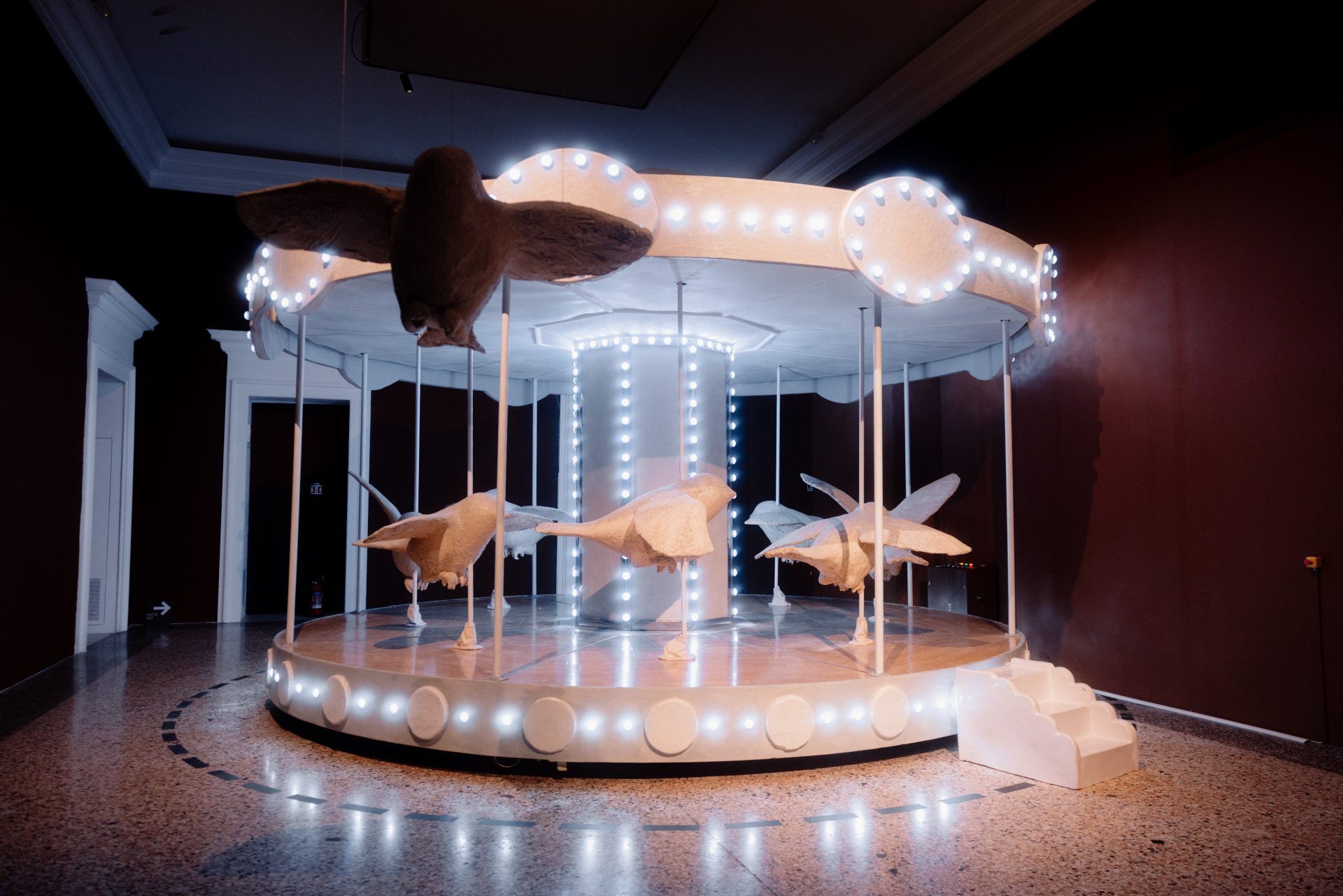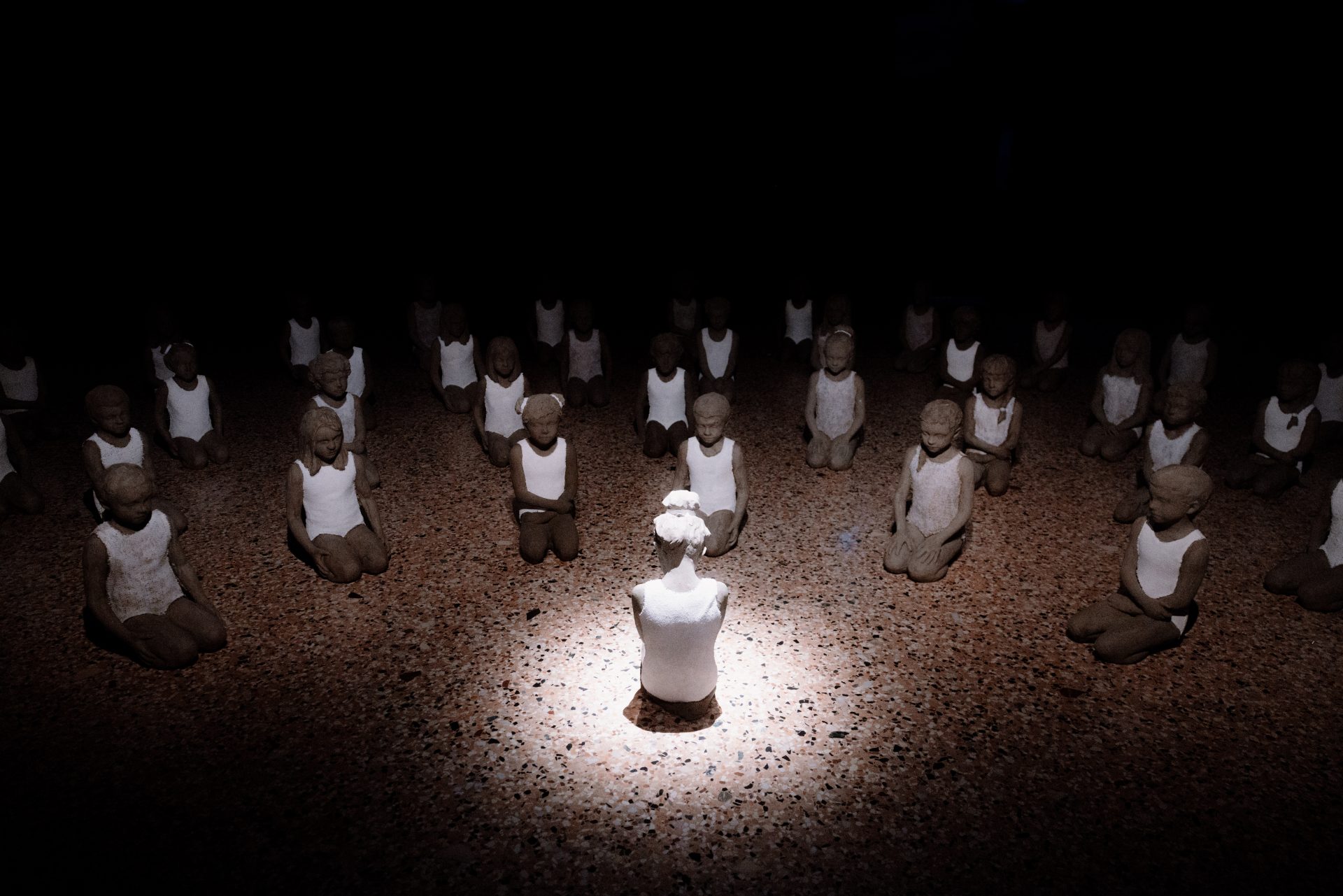Berruti, those silent children who speak to the soul

A silent, suspended universe populated by timeless childlike figures welcomes visitors to the halls of the Palazzo Reale in Milan . It is here that, until November 2nd, Valerio Berruti. More than kid 's takes shape, the largest solo exhibition ever dedicated to one of the most intense and recognizable artists on the contemporary scene. With monumental sculptures, immersive installations, videos, and even a carousel, Berruti constructs a visual and poetic journey that, starting from childhood as a time when anything can still happen, traverses the major themes of our contemporary world — war, hunger, loneliness—generating spaces for reflection that speak to everyone.
"I'm not interested in exploring childhood. My works don't depict childhood per se; it would be like saying Morandi was passionate about bottles," Valerio Berruti clarifies. "He wasn't interested in bottles as objects, but rather in using them to demonstrate an infinite poetics. So, children have this value for me."
The children in her works aren't subjects to be depicted but rather a poetic device, a mirror of the soul . "I use them as figures to make them tell the things I have to say," she explains. As the exhibition's subtitle, More than Kids , aptly states, her children don't just tell a personal story, but become collective symbols that show childhood as a place of belonging where we've all been , but also of a possible future yet to be written.

Berruti's children are quiet, never noisy. They're often alone. They don't play, they don't shout. Even when they're in groups, they remain alone. It's a dense silence, heavy and inviting listening rather than observation. They are suspended figures, speaking directly to the soul of those who look at them.
The artist explains: " I choose children because they represent the only moment in life in which, for better or worse, we can all recognize ourselves . There is an immediate empathy between the viewer and the work. People read in those faces what they are: some see them as serene, others are moved. The feelings they evoke are always self-referential." And he adds: " I work every day on suspension: the suspension of the gaze, of judgment. I want everyone to be able to see in my children the anxiety, joy, or serenity they carry within . Some find them peaceful, because they themselves are, and others cry seeing them anguished. Inside those children, ultimately, you end up seeing yourself."

Berruti's works are not just to be looked at, but also to be walked through and inhabited. Walking through them means moving, actively participating. Some installations engage the viewer directly : a group of children invites them into a suspended dimension; a little girl floats in the water, evoking the need for salvation; large birds carry in flight those who choose to climb aboard a monumental work inspired by ancient carousels, in a delicate balance between apparent lightness and natural force.
"In my works, I try to eliminate everything that is contextual: clothing, ethnicity, details," Berruti continues. "My children can appear Asian, African, European, depending on where the exhibition is set up. This way, every visitor can recognize themselves in those faces." He adds: "I haven't always drawn children. I got there over time, realizing that people recognized themselves in those faces: it was a conscious choice, not a nostalgic one. I didn't choose children because my childhood was difficult; on the contrary. My childhood was wonderful : few traumas, parents who loved me, no illnesses, I grew up in a beautiful place. I'm privileged. And, to be honest, I don't even know how much all this really has to do with what I do today."

Born in Alba in 1977, Valerio Berruti participated in the 53rd Venice Biennale in 2009, presenting a video composed of 600 fresco drawings, accompanied by music by Paolo Conte. In 2011, his video Kizuna , exhibited at the Pola Museum in Tokyo with an original soundtrack by Ryuichi Sakamoto, was transformed into a charity project to support the reconstruction of Japan after the devastating earthquake. The following year, he won the international Luci d'Artista award in Turin and created a permanent land art work at the Nirox Foundation in Johannesburg. In 2018, he began work on the animated short film La giostra di Nina , co-produced by Sky Arte and accompanied by music by Ludovico Einaudi.

The large carousel was exhibited for the first time in the autumn of the same year in the Church of San Domenico in Alba, before moving to the MAXXI – National Museum of 21st Century Arts – and the Royal Palace of Venaria. In 2022, Alba , a monumental sculpture in bronzed stainless steel over 12 meters tall, was inaugurated. It was donated by the Ferrero family to the artist's hometown and placed in the central Piazza Michele Ferrero, dedicated to the Alba entrepreneur. In May 2024, Circulating Sketch opened, a solo exhibition in China held at the prestigious Teagan Space in Youyi Bay, Beijing.
The Milanese exhibition, curated by Nicolas Ballario, is an immersive journey into Valerio Berruti's poetics , featuring some of his most iconic works—such as the large carousel sculpture La giostra di Nina , accompanied by an original soundtrack by Ludovico Einaudi—as well as completely new works, presented in Milan for the first time. Among these are Don't Let Me Be Wrong , the monumental sculpture installed in the courtyard of Palazzo Reale with music by Daddy G of Massive Attack, and two new video animations: Lilith , with a soundtrack by Rodrigo D'Erasmo, and Cercare silenzio , accompanied by the sound of Samuel Romano, the legendary vocalist of Subsonica. These latter works join previous animations already scored by Paolo Conte and Ryuichi Sakamoto, among others.

"With this extensive monographic exhibition, Berruti transforms himself into a director who, room after room, touches on all the great themes of contemporary life," concludes exhibition curator Nicolas Ballario . "His works don't speak of childhood, but use that period of life where anything can still happen to ask us if we still have time to change things . His figures are never finished because it is the visitor who decides the fate and origins of his subjects. Do we recognize ourselves in them? The monumentality of the works on display somehow tells us that we cannot ignore it. Anyone who looks away is complicit."
The opening photo depicts one of the works on display at the Palazzo Reale in Milan (installation of the exhibition “Valerio Berruti. More than kids”. Photo @Arthemisia)
With an annual subscription, you can browse over 50 issues of our magazine, from January 2020 to the present: each issue offers a timeless story. Plus, you'll get all the extra content like themed newsletters, podcasts, infographics, and in-depth articles.
Vita.it





